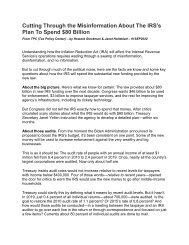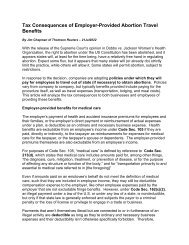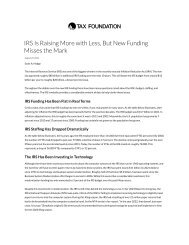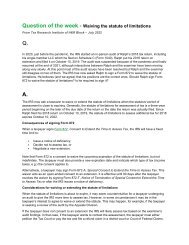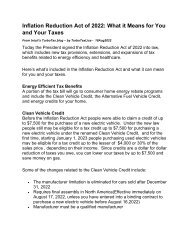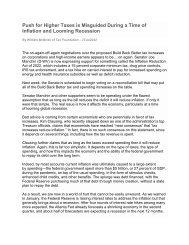Create successful ePaper yourself
Turn your PDF publications into a flip-book with our unique Google optimized e-Paper software.
<strong>Medical</strong> <strong>Expense</strong> <strong>Deduction</strong> <strong>Tax</strong> <strong>Relief</strong> <strong>Is</strong> <strong>Big</strong> <strong>Win</strong> <strong>For</strong> <strong>Seniors</strong> <strong>In</strong> <strong>Year</strong>-<br />
End Spending Package<br />
By Ashlea Ebeling Senior Contributor of <strong>For</strong>bes – 22Dec2020<br />
There’s finally certainty around the medical expense deduction for 2021 and beyond.<br />
Got high medical expenses in a low-income year? Congress heard your plea. As part of<br />
the $1.4 trillion spending bill Congress passed yesterday, millions of Americans will get<br />
a permanent break on the deductibility of out-of-pocket medical expenses. The<br />
threshold for claiming the medical expense deduction was set to climb to 10% for 2021,<br />
but the new legislation lowers the threshold to 7.5%—permanently—a win for<br />
Americans with high health care costs, especially seniors. The bill is expected to be<br />
signed into law by year-end.<br />
It was senior organizations like the AARP who pushed for the permanent fix, but it’s not<br />
just retirees who are good candidates for the tax break. It also helps the unemployed,<br />
the underemployed and even working folks with employer coverage who are paying<br />
ever more in high out-of-pocket medical costs.<br />
Here’s how it works. You report medical expenses on Schedule A (itemized deductions)<br />
of your 1040 federal income tax return and get a deduction to the extent they exceed<br />
7.5% of your adjusted gross income. You have to have enough other itemized<br />
deductions (home mortgage interest, charitable deductions, real estate taxes) to beat<br />
taking the standard deduction. Say your AGI is $50,000 and you have $4,875 of out-ofpocket<br />
expenses. The 7.5% hurdle is $3,750, which would leave $1,125 in deductions,<br />
reducing your tax bill.<br />
The medical expense deduction hurdle—or floor—was set at 7.5% back in 1986, then<br />
raised to 10% under the Affordable Care Act. <strong>Seniors</strong> got a reprieve. Then under the<br />
<strong>Tax</strong> Cuts and Jobs Act the hurdle was temporarily brought back down to 7.5% for<br />
everyone, and Congress has been extending it at that level annually on a temporary
asis through 2020. The permanent change now takes the medical expense deduction<br />
off the list of temporary year-end tax extenders and provides certainty for taxpayers of<br />
all ages.<br />
What counts as expenses to beat the hurdle? Think broadly: acupuncture to X-rays.<br />
Eligible expenses include premiums for Medicare Part B and Part D as well as<br />
supplemental insurance. <strong>In</strong>ternal Revenue Service Publication 502 has a complete list.<br />
You can claim expenses paid for yourself, your spouse and your dependents. Travel<br />
costs—mileage, tolls and parking—to and from the doctor’s office count too.<br />
Even if you don’t have enough expenses to claim the deduction on your federal return, it<br />
can carry over onto your state return and save you state income taxes. So hold onto all<br />
those receipts.



